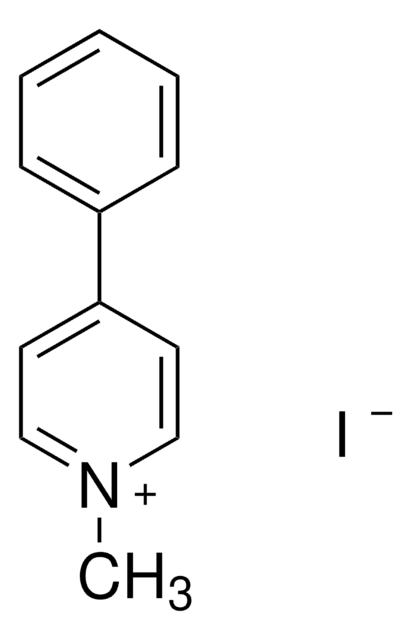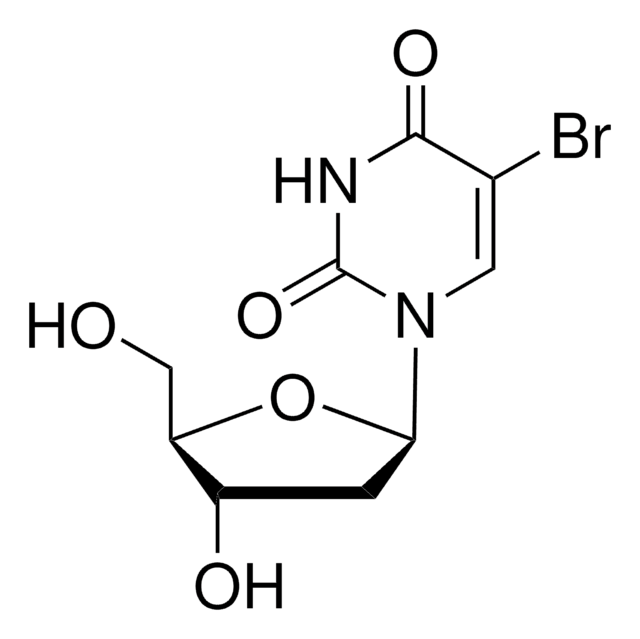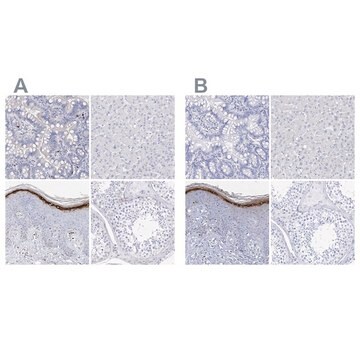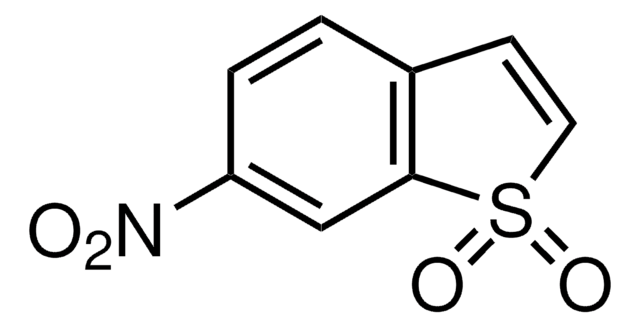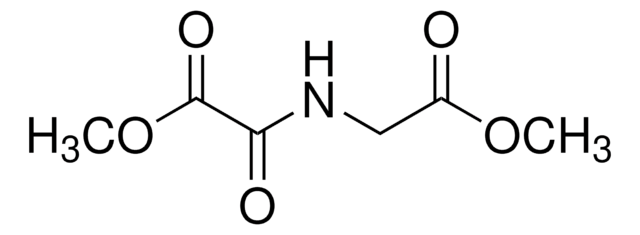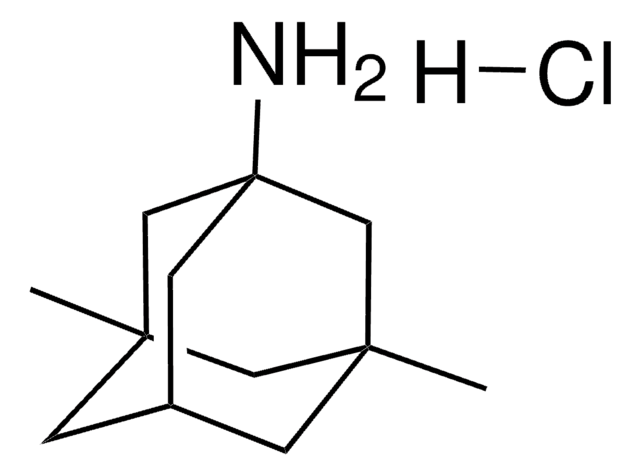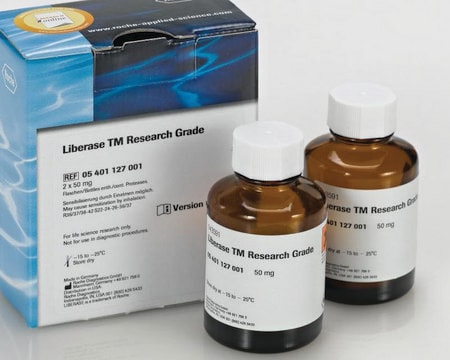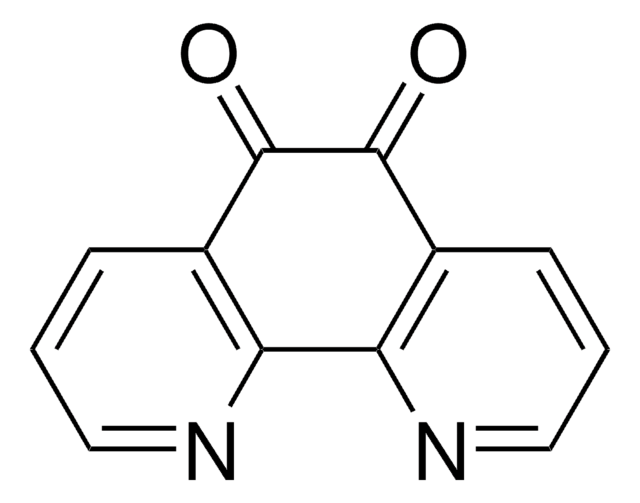D5314
DPQ
≥98% (HPLC), solid
Sinonimo/i:
3,4-Dihydro-5-[4-(1-piperidinyl)butoxyl]-1(2H)-isoquinolinone
Autenticatiper visualizzare i prezzi riservati alla tua organizzazione & contrattuali
About This Item
Formula empirica (notazione di Hill):
C18H26N2O2
Numero CAS:
Peso molecolare:
302.41
Numero MDL:
Codice UNSPSC:
12352200
NACRES:
NA.77
Prodotti consigliati
Origine biologica
synthetic (organic)
Livello qualitativo
Saggio
≥98% (HPLC)
Stato
solid
Punto di fusione
107-109 °C
Solubilità
DMSO: 1 mg/mL, clear, colorless to faintly yellow
Temperatura di conservazione
2-8°C
Stringa SMILE
N3(CCCCC3)CCCCOc1c2c(ccc1)C(=O)NCC2
InChI
1S/C18H26N2O2/c21-18-16-7-6-8-17(15(16)9-10-19-18)22-14-5-4-13-20-11-2-1-3-12-20/h6-8H,1-5,9-14H2,(H,19,21)
RVOUDNBEIXGHJY-UHFFFAOYSA-N
Applicazioni
DPQ has been used as a PARP1 (poly(ADP-ribose) polymerase 1) inhibitor in in vivo studies to determine the loss of γ-H2AX (H2A histone family member X) upon irradiation.
Azioni biochim/fisiol
3,4-Dihydro-5-[4-(1-piperidinyl)butoxyl]-1(2H)-isoquinolinone (DPQ) is known to decrease the PARP 1 (poly(ADP-ribose) polymerase 1) mediated apoptosis under the influence of ischemia. It is considered as more effective inhibitor than the traditionally used PARP1 inhibitor 3-aminobenzamide.
DPQ is a very potent poly(ADP-ribose) polymerase (PARP) inhibitor.
Codice della classe di stoccaggio
11 - Combustible Solids
Classe di pericolosità dell'acqua (WGK)
WGK 3
Dispositivi di protezione individuale
dust mask type N95 (US), Eyeshields, Gloves
Scegli una delle versioni più recenti:
Possiedi già questo prodotto?
I documenti relativi ai prodotti acquistati recentemente sono disponibili nell’Archivio dei documenti.
I clienti hanno visto anche
Parp1-XRCC1 and the repair of DNA double strand breaks in mouse round spermatids
Ahmed EA, et al.
Mutation Research, 683(1), 84-90 (2010)
Ujval Anilkumar et al.
PloS one, 12(11), e0188343-e0188343 (2017-11-18)
Cell death induced by excessive glutamate receptor overactivation, excitotoxicity, has been implicated in several acute and chronic neurological disorders. While numerous studies have demonstrated the contribution of biochemically and genetically activated cell death pathways in excitotoxic injury, the factors mediating
M J Suto et al.
Anti-cancer drug design, 6(2), 107-117 (1991-05-01)
A series of dihydroisoquinolinones, formally rigid analogs of 3-substituted benzamides, and a series of 2,3-disubstituted benzamides were synthesized and evaluated as inhibitors of poly(ADP-ribose) polymerase. The results indicated that the orientation of the amide with respect to the substituent on
Advances in Neonatal Care : Official Journal of the National Association of Neonatal Nurses, 29-29 (2012)
M J Eliasson et al.
Nature medicine, 3(10), 1089-1095 (1997-10-23)
Nitric oxide (NO) and peroxynitrite, formed from NO and superoxide anion, have been implicated as mediators of neuronal damage following focal ischemia, but their molecular targets have not been defined. One candidate pathway is DNA damage leading to activation of
Il team dei nostri ricercatori vanta grande esperienza in tutte le aree della ricerca quali Life Science, scienza dei materiali, sintesi chimica, cromatografia, discipline analitiche, ecc..
Contatta l'Assistenza Tecnica.

